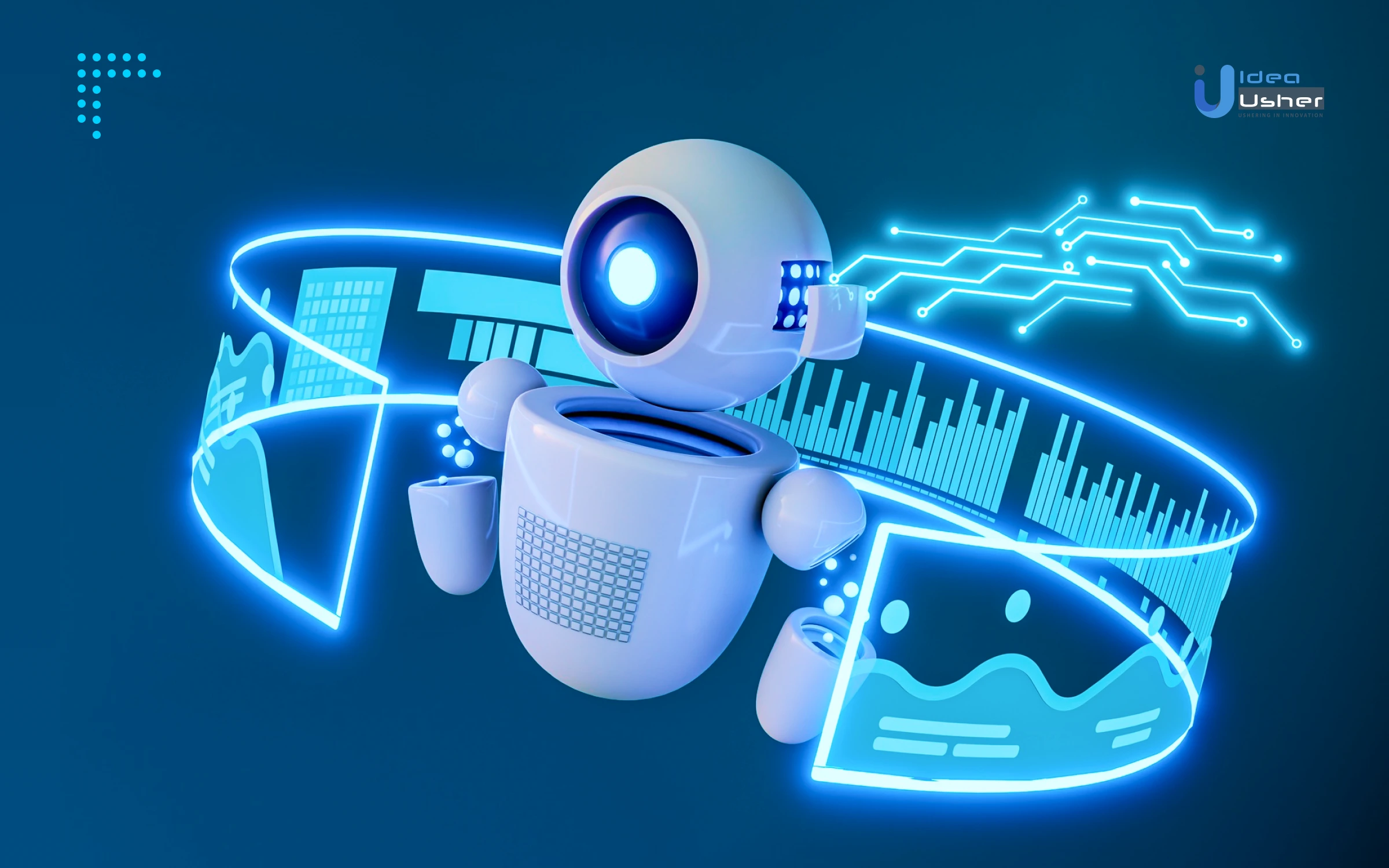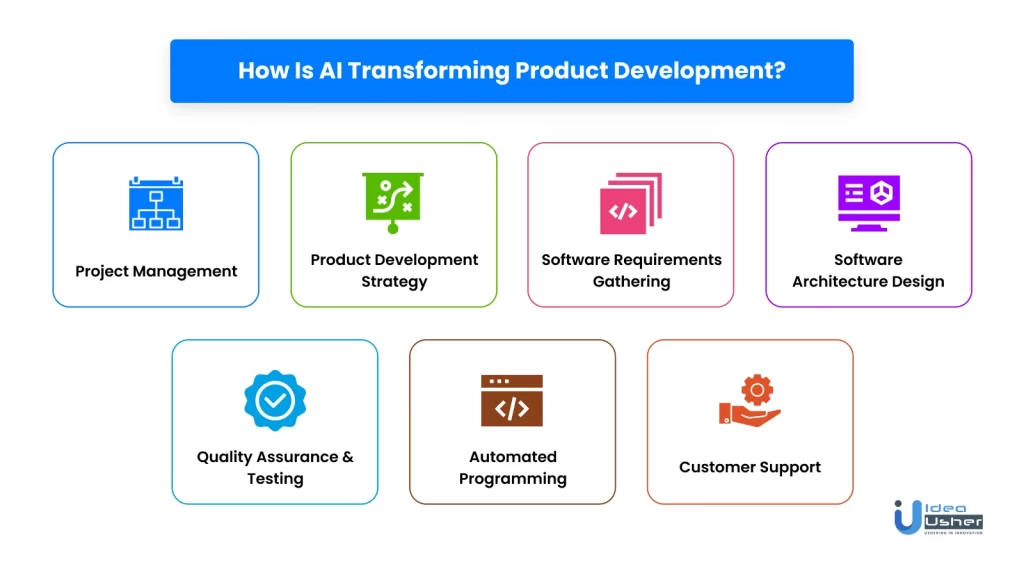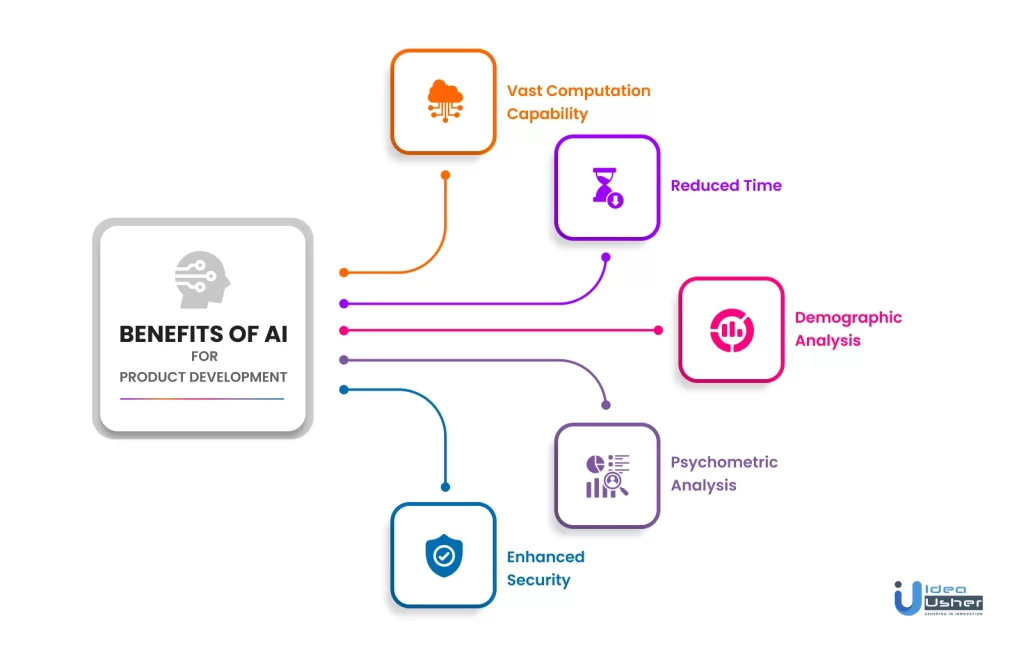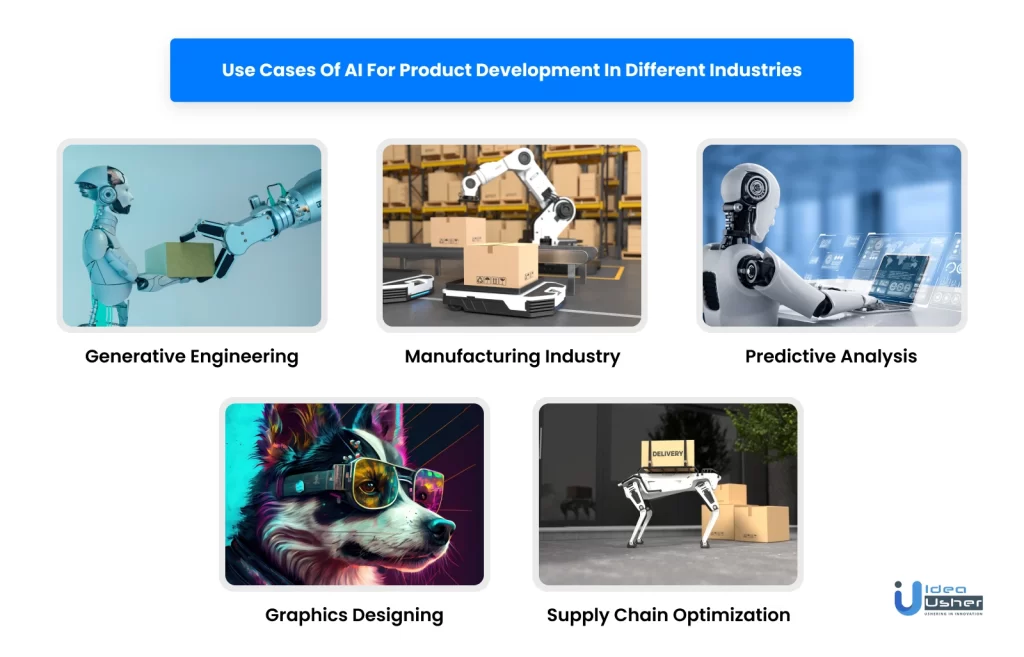
The real risk with AI isn’t malice, but competence.
Stephen Hawking
As we stand at the cusp of this technological revolution, one thing has become increasingly clear: the future of artificial intelligence is now. Recent AI advancements have been nothing short of astounding, with technologies such as ChatGPT, DALL-E 2, and Stability AI achieving previously thought impossible feats.
These cutting-edge developments have completely upended traditional operational paradigms, significantly reducing the time and effort required for creative tasks such as writing, drawing, designing, and developing. Given such, leveraging AI for product development is now an utmost necessity.
Some key statistics:
- In 2020, the US received the highest amount of private investments in AI, totaling 23.6 billion dollars.
- The global amount invested in AI-based startups was more than twice as much as the same quarter of the previous year, which was around 8 billion dollars.
- The market size of Artificial Intelligence was valued at $51.08 billion in 2020 and is projected to reach $641.3 billion by 2028, with a Compound Annual Growth Rate (CAGR) of 36.1 percent.
- According to a survey on global AI utilization, 52% of individuals mentioned the proliferation of AI in cybersecurity, putting AI-powered customer service second with 48% affirmation.
In this blog post, we will explore how AI is revolutionizing the field of product development and how it can open up new opportunities for companies and developers to create cutting-edge, innovative products for the future.
How is AI Transforming Product Development?

It is a complex and multifaceted process that demands a blend of creativity, technical expertise, and business acumen. At its core, product development is the process of bringing an idea or concept to life and turning it into a tangible product that can be sold and used by customers.
The process typically involves several stages: research and development, design, prototyping, testing, and manufacturing. Each stage is critical to the success of the final product, and requires a deep understanding of the market, customer needs, and the product’s technical capabilities!
Let’s have a look at how IT product developers can leverage AI in their daily functionalities:
1. Project Management
AI greatly enhances project management by providing the necessary tools for product stakeholders and project managers to conduct automated business analysis and accurately track project progress. Utilizing machine learning techniques, AI can make precise predictions for business plans such as product development time frame, resource allocation, and budget needs. AI-based product management tools like Asana, Project Insight, and Trello aid in efficient project scheduling and resource management.
2. Product Development Strategy
Implementing an effective product strategy is crucial for successful development and management, particularly for complex projects. AI is also affecting product development strategies such as Design Thinking and Agile.
The Agile method is widely used by software project managers and focuses on breaking down projects into smaller, manageable iterations, allowing for faster release of functional software products. It also allows developers to easily incorporate post-launch user feedback and suggestions into the product.
By utilizing similar data, AI can assist in forming a pre-design product development strategy by providing quicker access to customer feedback insights, as well as data on how similar products and features are performing in the market or trending on social media to help decide what works and what doesn’t. Tools like Splunk can help product developers to use big data for indexing and correlating information, generating reports, and displaying AI results in visual charts.
3. Software Requirements Gathering
Gathering software project requirements is the initial step in the product development cycle, and it requires a lot of collaboration among project team members. Functional requirements are collected in the form of user stories to give developers a clear understanding of the end product.
Manually gathering requirements can be time-consuming and may result in missing important details. Utilizing the right AI tool automates the process, saving time and providing a more thorough analysis of the data. Companies that use AI tools have seen a reduction of up to 50% in their requirements collection time. Developers can integrate AI tools such as IBM Watson and ScopeMaster with Jira and Azure DevOps for standalone requirement analysis.
4. Software Architecture Design
The software design phase involves creating an appropriate architecture for implementing a software solution. It requires expertise and attention to detail to develop an architectural design that satisfies the application’s user requirements.
AI software for product design can make this process more efficient and precise. For example, tools such as AIDA (Artificial Intelligence Design Assistant) can analyze previous software designs to identify the best approach for a new app’s user requirements. These AI-based tools can help gain a better understanding of user requirements and create a design that fulfills those needs.
5. Quality Assurance & Testing
Quality assurance, or code testing, is crucial in product development as it ensures that the software product adheres to established standards and market requirements. While manual testing involves developers and testers manually identifying and fixing bugs and errors, AI-based code testing techniques can automatically analyze the code, predict errors, and correct coding issues, resulting in a more efficient and faster testing process.
Differential, functional, visual, and declarative testing are examples of AI-based code testing techniques. Tools such as Test.AI, test.io plugin for Appium, and DeepCode are AI-powered solutions that aid in efficient code testing and integrate with platforms such as GitHub to assist with code review.
6. Automated Programming
Artificial Intelligence (AI) has been utilized in the backend of IDEs for some time, making coding easier and more efficient for programmers. For example, the PyCharm IDE for Python and JavaScript programming offers AI-based assistance for code completion, error highlighting, code inspection, etc.
These AI features further accelerate product development by recommending appropriate methods and automatically completing method invocations by filling in parameters and arguments, thus reducing syntax errors. This allows developers to quickly locate and fix errors early on, saving time and resources. AI is even starting to be able to generate code based on requirements, taking the development process one step further.
7. Customer Support
AI is also improving customer support systems. Businesses can use AI to improve customer support in various ways, such as understanding customer behavior and offering features to enhance it, managing large amounts of customer queries through automation, using natural language processing through chatbot capability to provide enhanced human-like interaction, and seamlessly integrating with CRMs to quickly locate information and reduce customer wait time.
Chatbots are being used more and more to help with customer service. They can help many customers simultaneously and always work without taking breaks. Many businesses are starting to use chatbots in their products because of how well they work. Chatbots are improving because of new technologies such as natural language processing, semantic analysis, speech recognition, and text recognition. These technologies help chatbots understand customers better and help them find solutions to their problems.
Developers can use special tools like Amazon Lex, Slack Bot API, and Facebook messenger API to make chatbots that can send messages, upload files, and talk with customers in text or voice.
Benefits of AI for product development

1. Vast Computation Capability
The use of AI in product development is nothing short of revolutionary. AI processors are designed with heterogeneous computing capabilities, making them much faster than regular processors when handling large-scale computational tasks. Using powerful algorithms and machine learning techniques, AI can help development teams analyze vast amounts of data, identify patterns, and make predictions that can help them create more efficient, effective, and responsive products.
2. Reduced Time
One of the key benefits of using AI in product development is its ability to reduce the time and effort required for tasks such as prototyping, testing, and development. With the help of AI, product teams can quickly and effortlessly construct naturalistic simulations of a product, test its performance in a virtual environment, and make adjustments as needed.
3. Demographic Analysis
In addition, AI can also be used to analyze customer data and identify new opportunities for innovation. This can include identifying new materials or manufacturing techniques that can be used to create more sustainable and cost-effective solutions.
4. Psychometric Analysis
Traditional psychometric methods often rely on self-reported surveys, which can be time-consuming and subject to bias. AI can analyze data from various sources, including social media posts, search history, and even physiological measures such as heart rate and facial expressions.
By taking care of ethical considerations, AI can be utilized for analyzing patterns in data to predict an individual’s likelihood of developing product-based habits or their perception of any developed product.
5. Enhanced Security
AI can enhance cybersecurity by utilizing large data sets.
AI models analyze vast amounts of data and learn to distinguish abnormal data packets from normal data traffic. AI-based authentication methods such as CAPTCHA, facial recognition, and biometric scanning can lead to timely alerts for cyber threats like credential stuffing and brute force attacks that are commonly used by hackers, as well as better predictions of unknown viruses and malware and improved security of personal user data.
Developers can use tools such as Targeted Attack Analysis by Symantec or QRadar Advisor by IBM to perform automatic investigative procedures for vulnerability detection and risk management, thus speeding up response strategies.
6. Optimal Decision Making
According to McKinsey, in the next decade, most businesses will have adopted at least one form of AI technology, and many large corporations will have fully integrated various AI solutions into their operations.
The potential for AI decision-making to drive economic growth is significant, with estimates suggesting it could add as much as $13 trillion to the global economy by 2030, equivalent to a 1.2% increase in global GDP. With such huge computational abilities, AI can analyze vast clusters of data in fractions of a second and produce significant probabilities. Such capability can aid businesses in placing themselves at the front of their respective domains.
Not just these, but AI can do so much more than we can possibly think! In the product sphere, there can be a widescale implementation across different industries and sectors.
Use cases of AI for product development in different industries
There is a cohort of innovative ways AI is being leveraged across industrial domains. From engineering to manufacturing, the application of AI has opened up new and innovative possibilities that were not previously imaginable.

1. Generative Engineering
Integrating Artificial Intelligence (AI) technology into design and engineering processes is becoming increasingly popular. From simplifying the design process to enhancing the efficiency of engineering simulations, AI has the potential to change the way we approach these fields. One of the main advantages of using AI in design and engineering workflows is the ability to quickly generate and evaluate multiple design options.
With Artificial Intelligence (AI) integration, algorithms can quickly generate a wide variety of design options and evaluate them based on specific criteria such as structural integrity or energy efficiency. Additionally, AI algorithms can optimize engineering simulation processes, decreasing the number of simulations required and increasing their accuracy. This is also known as generative designing.
Generative simulation and design are widely used in the aerospace and automotive industries. AI-powered generative design has been used to create lightweight yet strong components that can improve fuel efficiency and reduce emissions. This technology has also been applied in medical engineering and prosthetics design, resulting in more comfortable and effective products for patients.
2. Manufacturing Industry (Assembly line optimization)
By analyzing data from the assembly line, AI algorithms can optimize the process, leading to increased efficiency and reduced costs. Traditional assembly line operations often rely on human operators to identify and address issues, which can be time-consuming and prone to errors.
With AI, algorithms can quickly detect and diagnose problems, such as equipment malfunctions or bottlenecks in the process, and provide real-time solutions to improve the efficiency of the assembly line. AI can also optimize the scheduling and sequencing of assembly line tasks, which can significantly improve production times and costs.
3. Predictive analysis
One of the key benefits of AI-embedded product development is its ability to use predictive learning. By analyzing data from equipment, AI algorithms can anticipate when maintenance will be needed, allowing for proactive maintenance and reducing the likelihood of equipment failure.
These specialized algorithms can continuously monitor equipment and predict when supervision is necessary, reducing downtime and prolonging the lifespan of the equipment. An example of this can be seen in aerospace engineering, where safety and reliability are crucial. Specifically tailored AI models can greatly assist in detecting nuances and faults in products such as airplane wings and MCAS, helping to ensure greater efficiency and safety.
4. Graphics Designing (UI, UX, and graphical aesthetics)
AI can help develop user aesthetics, UI, and UX by allowing designers to quickly generate multiple design options based on user input. AI-driven design tools can analyze user data and provide suggestions based on trends and preferences, helping developers to create more compelling user interfaces.
These tools also allow developers to optimize functionality and create immersive experiences by assisting in generating wireframes and high-fidelity designs based on the user’s preferences and requirements. By providing the user with initial wireframes and gathering feedback, the AI models can quickly generate additional wireframes that incorporate the user’s feedback.
Want to test some AI’s capability in designing? Go to Midjourney or DALL-E 2 and search for newer UI/UX design concepts. You will be amazed by the results.
5. Supply Chain Optimization
AI and IoT embedded systems and products companies can anticipate supply demands, which can optimize inventory levels and shipping routes to minimize lead times and transportation costs. It can also be used to track customer preferences and purchase history, which can help in developing product designs and marketing strategies.
Predictive analysis features of AI can also help in predicting extrinsic attributes such as weather forecasts and value chain route congestions, which can aid in proactive supply chain decision-making.
But what about ethics and legality?

The real problem is not whether machines think, but whether men do.
B.F SKINNER
As AI systems become increasingly autonomous and integrated into various aspects of our lives, they raise several ethical and legal issues that must be addressed.
One of the critical ethical concerns related to AI is the possibility of bias and discrimination. AI models are only as impartial as the data they are trained on. If that data contains biases, the AI system will reflect them in its decisions. This can result in unfair treatment of particular groupings and perpetuate existing societal inequalities.
Privacy and surveillance are also major concerns when it comes to AI. As the systems become more refined, they can gather and analyze large amounts of confidential data, which could be used for nefarious purposes.
Additionally, the increasing autonomy of AI systems raises questions about who is responsible for their actions and what kind of oversight is needed to ensure that they do not cause harm.
The last critical issue related to AI is its potential to replace human judgment and decision-making. As AI systems become more advanced, there is a risk that they will be used to make decisions that humans would normally make, such as hiring decisions or medical diagnoses. This raises ethical questions about the role of AI in society and how it should be used to augment rather than replace human capabilities.
As such, it is crucial for organizations to develop guidelines for the ethical use of AI, for example, testing for bias in data and models, and for society as a whole to have an ongoing dialogue about the implications of this technology. Additionally, research and education in these areas are essential to help identify and mitigate potential risks and ethical concerns and to ensure that AI is developed and used in a way that benefits humanity.
Future Trends of AI in Product Development

AI has already made its breakthrough, and so does have technologies like deep learning, neural learning, and predictive analytics.
The future of product development, therefore, is intertwined with the advent of the Industrial revolution 6.0. This is the future where humans and robots will coexist and work hand-in-hand to build better solutions and products. This revolution will primarily aim to develop products that enhance the quality of life in personal and professional regimes.
- Multidimensional printing could replace generative designing and ideation processes, wherein objects built and printed from the virtual could be three-dimensional printed in real, and these would be objects or products of mass use.
- Robo-medics would be the products of medical excellence wherein robots would aid doctors as obedient and expert assistants that could expedite medical diagnostic and rehabilitation processes.
- Finally, DevOps procedures and practices will entirely alter to help devise newer, better, and greater products and services. Serverless computing, microservice architecture, low code/no code utilization, and DevSecOps adoption could disrupt the product development modalities in the future.
Key Takeaway
Overall, the key takeaway of artificial intelligence’s amalgamation to product development is:
- It can significantly boost the efficiency and effectiveness of development processes by automating repetitive tasks and providing valuable insights through data analysis.
- AI facilitates vast computation, generative designing, manufacturing optimization, predictive analysis, and psychographic/demographic analysis. All of this can be a dealbreaker for strategic product development.
- Future product development trends involve multidimensional printing, Robo-medics, and enhanced DevOps trends to better devise innovative products and services.
- However, it is important for companies to consider ethical, legal, and societal implications when integrating AI into their product development methodologies to ensure transparency and accountability in using the technology.
At Idea Usher, we recognize the immense potential of technologies like AI to revolutionize the way businesses operate. That’s why we have always been proactive adopters of cutting-edge solutions, working tirelessly to stay ahead of the curve and help our clients do the same. We have a proven track record of helping businesses improve efficiency, increase revenue, and create new and innovative products. Whether you’re a startup looking to disrupt your industry or an established company looking to stay competitive, we can help you achieve your goals. Don’t hesitate to contact us for any of your business needs.
Get in touch with us now!
Contact Idea Usher at [email protected]
Or reach out at: (+1)732 962 4560, (+91)859 140 7140
FAQs
How is AI used in product development?
AI is used in various stages of product development, such as concept development, design, prototyping, testing, and final production. It can assist in market research and analysis, improve the design and functionality of products, assist in prototyping and testing, and optimize production processes. AI can also predict consumer demand and improve supply chain efficiency.
What are the 3 main challenges when developing AI products?
Developing AI products can present several challenges, such as obtaining high-quality and diverse data sets, selecting the right algorithm and optimizing its parameters, and ensuring that the AI model is explainable and interpretable. Data quality and availability are crucial for training AI models. Without sufficient data, the AI model may not be able to make accurate predictions. Algorithm selection and optimization are also essential, as different algorithms have different strengths and weaknesses, and finding the optimal configuration can be a time-consuming task. Finally, the explainability and interpretability of the AI model are important to ensure trust in the system and compliance with regulations, especially in high-stakes or sensitive situations such as healthcare or finance.
What are the 5 disadvantages of AI?
The 5 primary disadvantages of AI are:
- High cost of development and implementation.
- Limited understanding and decision-making capabilities.
- Lack of creativity and innovation.
- Dependence on human supervision and maintenance.
- Job displacement.









Sayan Chakraborty